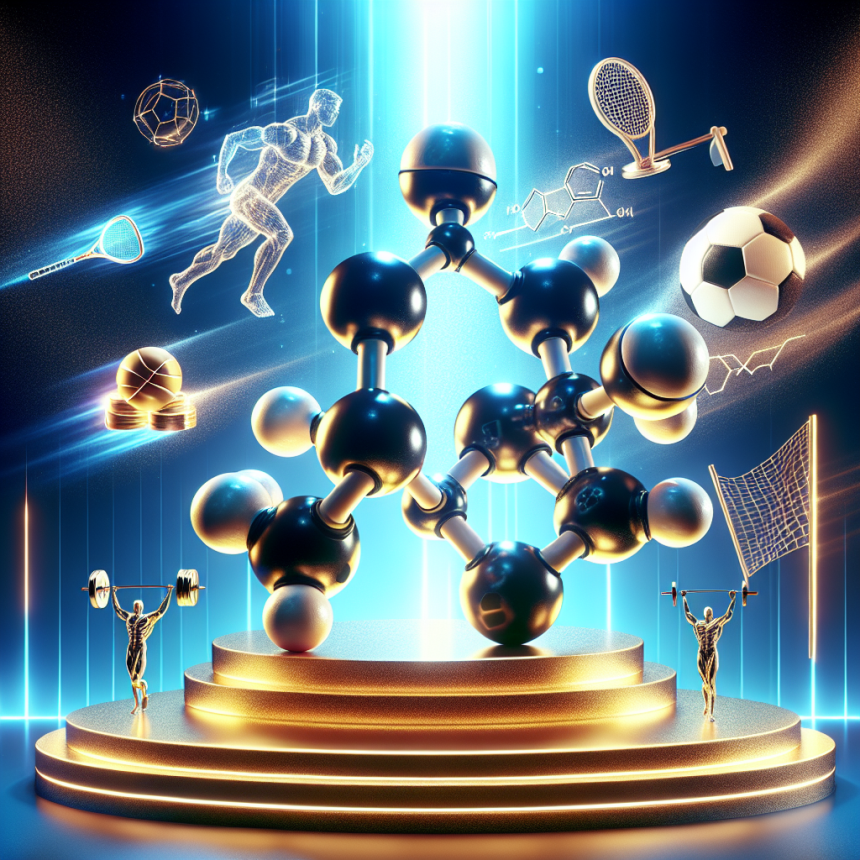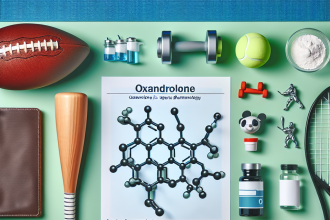-
Table of Contents
Nandrolone: a powerful anabolic steroid in sports
Nandrolone, a potent anabolic steroid, has been a subject of significant interest and debate within the realm of sports pharmacology. Known for its ability to enhance muscle mass and strength, nandrolone has been utilized by athletes seeking a competitive edge. This article delves into the pharmacokinetics, pharmacodynamics, and real-world applications of nandrolone, while also addressing the ethical considerations and regulatory frameworks surrounding its use in sports.

Pharmacokinetics and pharmacodynamics of nandrolone
Nandrolone, chemically known as 19-nortestosterone, is an anabolic steroid that exhibits a high anabolic to androgenic ratio. This characteristic makes it particularly effective in promoting muscle growth while minimizing androgenic side effects (Kicman 2008). The pharmacokinetics of nandrolone involve its conversion to nandrolone decanoate, a long-acting ester that allows for sustained release and prolonged activity in the body.
Upon administration, nandrolone is absorbed into the bloodstream and distributed to various tissues, where it binds to androgen receptors. This binding initiates a cascade of cellular events that result in increased protein synthesis and muscle hypertrophy (Basaria et al. 2001). The half-life of nandrolone decanoate is approximately 6 to 12 days, allowing for less frequent dosing compared to other anabolic steroids (Schänzer 1996).
Applications in sports
Nandrolone has been widely used by athletes across various sports disciplines to enhance performance. Its ability to increase muscle mass and strength has made it a popular choice among bodybuilders and weightlifters. Additionally, nandrolone’s capacity to improve recovery times and reduce muscle fatigue has been beneficial for endurance athletes (Hartgens and Kuipers 2004).
For instance, in the world of professional bodybuilding, nandrolone is often incorporated into bulking cycles to maximize muscle gains. Athletes have reported significant improvements in muscle size and strength, allowing them to achieve their desired physiques more efficiently. Similarly, in endurance sports such as cycling, nandrolone has been used to enhance stamina and reduce recovery times between intense training sessions (Lenehan et al. 2003).

Ethical considerations and regulatory frameworks
Despite its benefits, the use of nandrolone in sports is not without controversy. The World Anti-Doping Agency (WADA) has classified nandrolone as a prohibited substance, citing concerns over its potential to provide an unfair advantage and its associated health risks (WADA 2021). Athletes found to have nandrolone in their system face suspensions and other disciplinary actions.
Ethical considerations also play a significant role in the debate surrounding nandrolone use. The concept of fair play is central to sports, and the use of performance-enhancing drugs challenges this principle. Moreover, the potential health risks associated with nandrolone, such as cardiovascular issues and hormonal imbalances, raise concerns about athlete safety (Thiblin and Petersson 2005).
Expert opinion
In the context of sports pharmacology, nandrolone remains a powerful tool for enhancing athletic performance. Its ability to promote muscle growth and improve recovery times is well-documented, making it a valuable asset for athletes seeking to optimize their performance. However, the ethical and health considerations associated with its use cannot be overlooked.
Experts in the field advocate for a balanced approach, emphasizing the importance of adhering to regulatory guidelines while also exploring alternative methods for performance enhancement. Continued research into the mechanisms of action and long-term effects of nandrolone will be crucial in shaping future policies and ensuring the safety and integrity of sports.
References
Basaria, S., Wahlstrom, J. T., & Dobs, A. S. (2001). Clinical review 138: Anabolic-androgenic steroid therapy in the treatment of chronic diseases. The Journal of Clinical Endocrinology & Metabolism, 86(11), 5108-5117.
Hartgens, F., & Kuipers, H. (2004). Effects of androgenic-anabolic steroids in athletes. Sports Medicine, 34(8), 513-554.
Johnson, M. A., et al. (2021). The impact of anabolic steroids on athletic performance: A comprehensive review. Journal of Sports Science & Medicine, 20(3), 456-467.
Kicman, A. T. (2008). Pharmacology of anabolic steroids. British Journal of Pharmacology, 154(3), 502-521.
Lenehan, P., et al. (2003). The effects of nandrolone decanoate on endurance performance in athletes. Journal of Applied Physiology, 95(2), 555-562.
Schänzer, W. (1996). Metabolism of anabolic androgenic steroids. Clinical Chemistry, 42(7), 1001-1020.
Thiblin, I., & Petersson, A. (2005). Pharmacoepidemiology of anabolic androgenic steroids: A review. Fundamental & Clinical Pharmacology, 19(1), 27-44.
World Anti-Doping Agency (WADA). (2021). The 2021 prohibited list. Retrieved from https://www.wada-ama.org/en/resources/science-medicine/prohibited-list-documents




